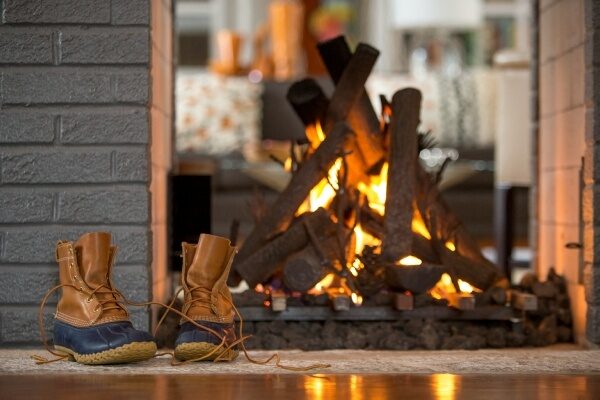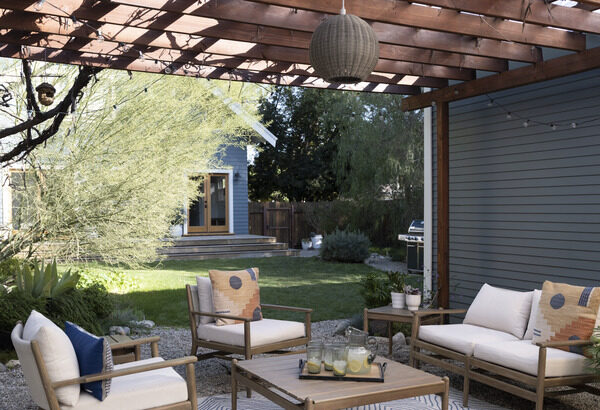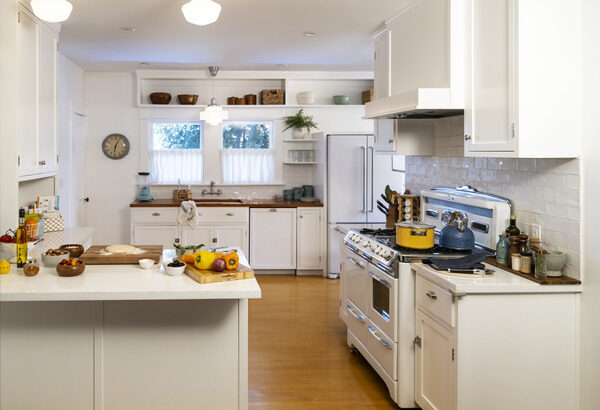
If winter weather catches you off guard, and your home is not prepared for heavy snow and cold, you can experience damage ranging from burst pipes to a collapsed roof. Costs for repairs of this scale add up quickly, so prepping your house for the colder months in autumn is a smart approach. By following these tips on how to winterize a house, you can help avoid costly repairs this winter season.
1. Reinforce your roof to prevent ice dams
Ice dams, which occur when water builds up behind an ice blockage, can cause damage to ceilings and roofs by allowing melting snow to leak into a home. To prevent ice dams from forming, you need to keep the entire roof the same temperature as the eaves. Take this time to increase ventilation, add insulation, and seal off possible air leaks to be ice dam free.
If an ice dam does form, the best way to melt it is to fill a nylon stocking with calcium chloride ice melt and place it on top of the ice, says Marshall. Try to position the stocking vertically across the ice, with a bit overhanging the edge of the gutter. Only use calcium chloride, not rock salt, which will damage your roof, but be aware that shrubs and plants below the gutters or near downspouts could be damaged by the calcium chloride.
2. Insulate pipes
When water pipes freeze and burst, they can cause water damage. Avoid flooding and a messy cleanup by insulating your water pipes with materials such as heating tape and fiberglass.
3. Seal air leaks
By preventing cold air from leaking into your home, you can save money on your energy bills and also make your home warmer. To reduce air leakage, install or replace the sweep at the base of your door and apply caulk or weather-stripping around drafty windows.
4. Seal the attic
Sealing the attic is a great way to avoid heat loss through your roof in future winters, and to prevent ice and snow damage. If your roof is clean and clear of snow in the winter, chances are it’s melting due to lost heat. Prevent this by making sure your attic insulation is 12 inches deep. If you’re going to install a new layer of insulation over an existing one, avoid using kraft-faced insulation, which can lead to moisture problems.
If your attic ventilation is poor, water vapor generated from bathing, cooking and cleaning can reach the cold underside of a roof deck and condense. If this isn’t properly addressed, moisture build-up could damage your roof deck, insulation and drywall.
5. Weather-strip and insulate the doors, windows and attic
Winterize your windows so melting snow won’t lead to mold and mildew problems around your windows and doors. Seal up any gaps with weather-stripping seals or caulking to prevent moisture from getting in.
Prevent outside air from getting inside your home by installing door sweeps at the bottom of all exterior doors. They’re inexpensive, simple to put on and can keep dust and pests out, too. Also, keep cold air out of your home by sealing window gaps.
6. Inspect the furnace and chimney
It’s important to ensure that your heating system is operating effectively and safely. A poorly maintained furnace can produce dangerous amounts of carbon monoxide, an odorless, colorless gas that can cause flu-like symptoms, confusion and even death.
Make sure your furnace and chimney are in working order before the cold weather hits. Both should be cleaned and inspected by a qualified professional each year to ensure safe and efficient use. Whether you have an oil, gas, or electric system, you should have it serviced yearly, before the main heating season.
7. Prune your trees
When allowed to build up, ice and snow damage branches, which in turn can snap off trees and land on your house. Large overhanging tree branches could get heavy with snowfall and potentially break and fall onto your roof. If a tree is close to your home, prune its branches and cut down any low-hanging limbs before the start of the winter.
You will want to have those branches trimmed before the snow starts falling. Low-hanging branches can also scrape your roof and damage shingles.
8. Install wind-proofing materials
Strong winds can cause substantial damage to your property. To help avoid wind damage this winter, install wind-proofing features such as permanent window shutters and impact-resistant shingles. You may also want to consider purchasing steel doors, as high winds can tear through other types of material more easily.
For more information on how to keep yourself, your car, and your home safe during the winter, visit here.
Share these home winterizing tips
Help your friends get ready for winter by sharing this infographic on winterizing a house.
![How to Winterize a House for the Cold Weather [Infographic]](https://blog.nationwide.com/wp-content/uploads/2015/11/winterize-a-home-infographic.png)



